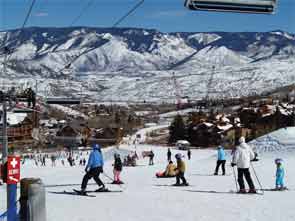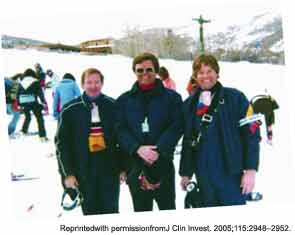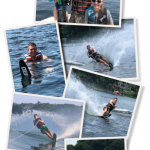

Scientific meetings typically are businesslike affairs held in hotel ballrooms or conference centers, with attendees having little opportunity to get to know each other. Yet one event on the annual calendar of rheumatology medical education meetings defies that stereotype: The Winter Rheumatology Symposium, held the last week of each January in scenic Snowmass, Colo.
Located in a ski resort close to Aspen, the Winter Rheumatology Symposium is a six-day meeting with two two-hour educational sessions held each morning and afternoon. From 9 a.m. to 4:30 p.m. each day, there are no scheduled activities, so attendees have time to ski, relax, or talk with other attendees and speakers. The meeting was founded in 1977 by rheumatologists William N. Kelley, MD, professor of medicine at the University of Pennsylvania School of Medicine in Philadelphia; William Arnold, MD, of the Illinois Bone and Joint Institute in Morton Grove, Ill.; and Edward W. Holmes, MD, now president and chief executive officer of the Stanford Consortium for Regenerative Medicine in La Jolla, Calif. In the early 1990s, the ACR took over management of the meeting, but each year, a three-member committee of rheumatologists plans the educational course.
Cutting-Edge Clinical Information
The meeting always attracts between 150 and 200 attendees, mainly rheumatology clinicians and top lecturers in rheumatologic care, says Michael E. Weinblatt, MD, professor of medicine at Harvard Medical School and Brigham and Women’s Hospital in Boston.
“We try to have a portion of the talks be cutting-edge basic science with clinical applications. Most of our attendees are practicing rheumatologists,” says Dr. Weinblatt, who has attended the meeting for the past 25 years and twice served as co-chair. “We highlight the major diseases rheumatologists see, and we also bring in lecturers from other specialties, including pulmonology, dermatology, gastroenterology, [or] radiologists or renal specialists.” Even if attendees don’t ski, they enjoy the mountain setting and the opportunity to have in-depth conversations about rheumatologic care, he adds. The 2013 meeting, which attracted 185 attendees and speakers, included a top pulmonologist speaking on lung comorbidities and lung care in rheumatic diseases. Next year’s meeting will include a pediatric dermatologist and a gastroenterologist, Dr. Weinblatt notes.
One former speaker and longtime attendee, and co-chair of the 2013 meeting, Bruce N. Cronstein, MD, professor of medicine at New York University Medical Center, says while attendees tend to be avid skiers, the high-quality content is the major draw.
“Rheumatology is a big area, with a lot of things to talk about. So at this meeting, we try to have a few basic science talks, but most of the talks are very clinician oriented. We want people feeling like they are taking something back to really improve their practices,” says Dr. Cronstein.
Small on Purpose
Since its inception, the Winter Rheumatology Symposium has kept the number of attendees small to foster in-depth conversations, adds Dr. Cronstein. “Everybody who attends feels they can ask questions or make comments about the lectures. And you can meet up with the speakers on the slopes and ask them questions too. Everything is low key.” The several-hour gap between sessions encourages high attendance at the educational sessions, because there’s plenty of time to ski or relax, says Dr. Cronstein, whose laboratory work focuses on methotrexate and the mechanism of action of various drugs in rheumatic disease treatment. “Just the fact that you can sit on a ski lift with the speakers makes this meeting unique.”
Longtime annual attendees of the meeting say they simply enjoy its excellent content, relaxed format, and bucolic setting, says Philip Taylor, MD, a rheumatologist in Cape Girardeau, Mo.
“I have attended the Winter Rheumatology Symposium for some 25 years, because it is the best rheumatology meeting on the planet,” says Dr. Taylor. “The format of 23 one-hour, state-of-the-art lectures fits my needs perfectly as a busy practicing clinician. Another benefit is the opportunity to interact with the faculty who tend to spend all or most of the week at the meeting. Over the years, I have developed contacts with physicians who are experts in many areas of our specialty, and I often e-mail or phone them for advice. Of course, the wonderful winter mountain setting and skiing at Snowmass is another attraction.”
Susan Bernstein is a freelance medical journalist based in Atlanta.

